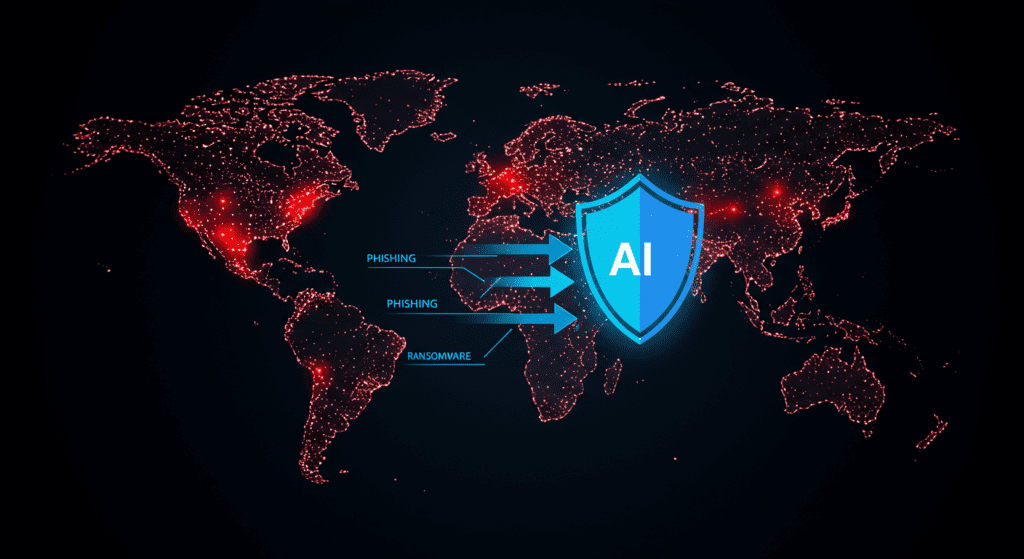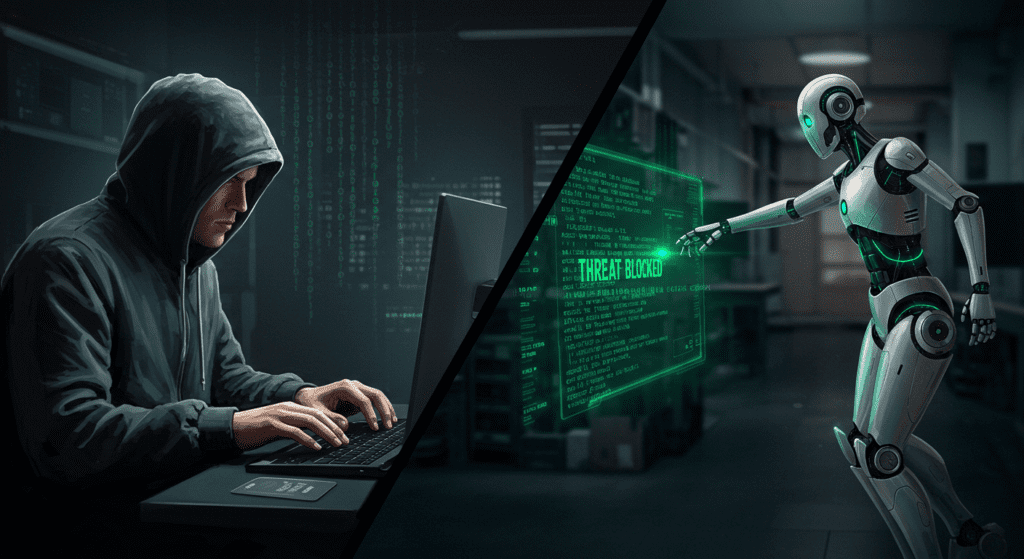Discover how AI-driven cybersecurity training preps employees for digital threats like phishing and ransomware with top tools and tips.
Introduction
Have you ever clicked a shady email link by mistake? Yeah, me too. It’s a gut-sinking moment—and in today’s world, it’s a goldmine for hackers. Cyberattacks are skyrocketing, and employees—not just IT crews—are often the first line of defence. That’s where AI-driven cybersecurity training swoops in, turning regular folks into digital watchdogs. Forget boring slideshows; this is about using artificial intelligence to prepare workers for real-world threats like phishing scams or ransomware traps.
Why’s it matter? Because one slip can cost a company millions—or worse, its reputation. I’ve seen businesses scramble after breaches, and trust me, it’s not pretty. Whether you’re an HR manager, a small business owner, or just someone who hates spam, this post breaks down how AI’s shaking up training to keep us all safer online. Let’s dig in!
How AI Makes Cybersecurity Training Smarter
So, what’s the deal with AI-driven cybersecurity training? It’s not your grandpa’s “don’t click that” lecture. AI takes it up a notch by personalizing the experience.it scans your habits—like how often you fall for fake emails—then tailors lessons to your weak spots. It’s like having a coach who knows exactly where you trip up.
I chatted with a tech trainer once who swore by this. He said AI can simulate real attacks—think phishing emails that look way too legit—and teach you to spot them without the actual risk. That’s hands-on learning, not just theory. In a world where cybersecurity training for employees needs to keep pace with slick hackers, AI’s speed and smarts are a game-changer.
Tools Powering AI Cybersecurity Training
What’s out there? Plenty of cool stuff. Platforms like KnowBe4 use AI to run fake phishing tests, tracking who bites and who doesn’t. It’s sneaky but brilliant—employees learn fast when they see “you’ve been had” pop up. Then there’s CybSafe, blending AI with behavioural nudges to make lessons stick. Think less “Do this” and more “hey, here’s why it matters.”
Another gem is Proofpoint, which uses AI to analyze threats and build training around what’s hitting your industry. These tools aren’t just tech toys—they’re turning regular desk jockeys into AI digital threat protection pros. Want more on tech picks? Peek at our cybersecurity tools roundup.
Why AI Training Beats the Old Way
Here’s why it rocks:
Real-Time Feedback: Mess up a test? AI tells you why right then.
Custom Fit: No one-size-fits-all—it’s built for you.
Engagement: Ditch the snooze-fest slides for interactive drills.
Results: Companies see phishing clicks drop by 50% or more.
A buddy at a retail firm told me their team went from clueless to cautious in months with AI training—fewer breaches, less panic—hard to argue with that.

The Catch: Challenges of AI-Driven Training
It’s not all high-fives, though. Rolling out AI-driven cybersecurity training can hit snags. For starters, it’s not cheap—small businesses might flinch at the price tag. And setup You need someone who gets AI, not just a random intern. Plus, there’s the creep factor—some folks don’t love being “watched” by tech, even if it’s for their own good.
I’ve heard this from a manager who tried it—half his team loved the training, half grumbled about Big Brother vibes. It takes finesse to get buy-in, but the stats don’t lie: trained employees stop more threats.
Real Stories of AI Training in Action
Let’s get real. A healthcare chain I read about used KnowBe4’s AI tools after a nasty breach in 2023—staff clicking phishing links left and right. Post-training, their “click rate” crashed from 30% to 5%. That’s huge when patient data’s on the line. Another case: a tech startup leaned on Proofpoint’s AI drills to prepare for ransomware spikes in 2024. No breaches since.
These aren’t flukes. Cybersecurity training for employees powered by AI turns rookies into roadblocks for hackers. It’s practical, not pie-in-the-sky.
What’s Coming: The Future of AI Training
Where’s this headed? Buckle up—it’s wild. AI’s getting better at predicting threats, like spotting new scams before they hit. Imagine training that updates itself daily based on what’s trending in cybercrime. Experts say we’ll see VR thrown in soon—think “virtual hacker attack” simulations. By 2030, AI-driven cybersecurity training could be standard, especially as remote work keeps growing.
I can see it now: employees dodging digital bullets like pros. Curious about what’s next? Our future tech post has more juice.
Top 9 AI Tools for Cybersecurity Training
When it comes to AI-driven cybersecurity training, the right tools can make or break your program. These platforms don’t just teach—they adapt, simulate, and engage employees in ways that stick. I’ve poked around the market, talked to folks who’ve used them, and narrowed it down to nine standouts that’ll help prep your team for digital threats. Let’s break them down.
1.KnowBe4
This one’s a crowd-pleaser. KnowBe4 uses AI to craft fake phishing emails that look scarily real, testing who bites and who dodges. It tracks progress, tweaks lessons based on weak spots, and keeps things fresh with new scenarios. A friend in HR swore it cut their team’s gullibility in half—pretty solid for cybersecurity training for employees.
2.CybSafe
CybSafe got a chill vibe—less “you messed up” and more “let’s fix this.” Its AI digs into behavior data, nudging users with tips tailored to their habits. Think gentle reminders instead of finger-wagging. It’s big on phishing sims too, making it a go-to for AI digital threat protection.
3.Proofpoint
Proofpoint’s AI doesn’t mess around—it scans real threats hitting your industry, then builds training around them. It’s like handing your team a playbook for what’s coming. I’ve heard IT crews love how it syncs with their systems, keeping AI-driven cybersecurity training relevant and sharp.
4.Hoxhunt
Gamification is the name of the game here. Hoxhunt’s AI sends quirky phishing tests—think “your Netflix account expired”—and rewards points for spotting fakes. Employees get hooked, and suddenly, they’re pros at dodging threats. It’s fun, but it works for serious cybersecurity training for employees.
5.Ninjio
Ninjio leans on storytelling—think cartoon hackers and cliffhanger videos. Its AI figures out who needs what, serving up bite-sized lessons monthly. A manager I know said their staff actually wanted to watch these. That’s rare for training, right? Great for AI digital threat protection vibes.
6.AwareGO
Simple but slick, AwareGO uses AI to churn out short, snappy videos and quizzes. It’s less about tech wizardry and more about practical know-how—spotting scams, locking down passwords. Perfect for small teams needing quick, effective AI-driven cybersecurity training.
7.PhishMe (Cofense)
PhishMe, now under Cofense, is a phishing sim champ. Its AI crafts attacks based on real-world trends, then drills employees ’til they’re bulletproof. A buddy at a bank said it turned their staff from sitting ducks to eagle-eyed spotters. Classic cybersecurity training for employees.
8.SANS Securing The Human
SANS brings the heavy artillery—AI-powered courses that adapt to your role. It’s less “one size fits all” and more “here’s what YOU need.” Think interactive labs and real-time feedback. It’s pricier, but for deep AI-driven cybersecurity training, it’s gold.
9.ESET Cybersecurity Awareness Training
ESET keeps it straightforward—90-minute sessions packed with AI-driven quizzes and sims. It’s not flashy, but it’s thorough, covering phishing, malware, you name it. A small biz owner told me it’s their no-fuss pick for AI digital threat protection.
These tools aren’t just tech—they’re about getting you.

Conclusion
AI-driven cybersecurity training isn’t just a trend—it’s a must-have for prepping employees against digital threats. It’s fast, it’s tailored, and yeah, it’s got some hurdles, but the payoff is clear: fewer clicks on bad links, stronger defences, calmer bosses in a world where one wrong move can tank a company,
AI’s turning everyday workers into the frontline heroes we need. Want to keep your team sharp? Start digging into AI digital threat protection now—it’s the smartest move you’ll make.
FAQs
How does AI improve cybersecurity training?
It’s like a personal tutor—watches how you work, spots your flubs, and drills you ’til you’re solid. Simulates real threats, too, so you’re ready.
What’s the best AI training tool out there?
KnowBe4, CybSafe, Proofpoint—they’re tops. Each one’s got a knack for making training fun and effective, not a chore.
Any downsides to AI training?
Sure—costs a bit, needs tech-savvy setup, and some folks find it nosy. Worth it, though, if you want results.
How big a deal are digital threats now?
Massive. Phishing and ransomware hit hard in 2024—companies can’t afford sloppy defenses anymore.
Will AI replace human trainers?
Nah, it’s a helper, not a takeover. AI runs the drills; humans set the vibe and strategy.

